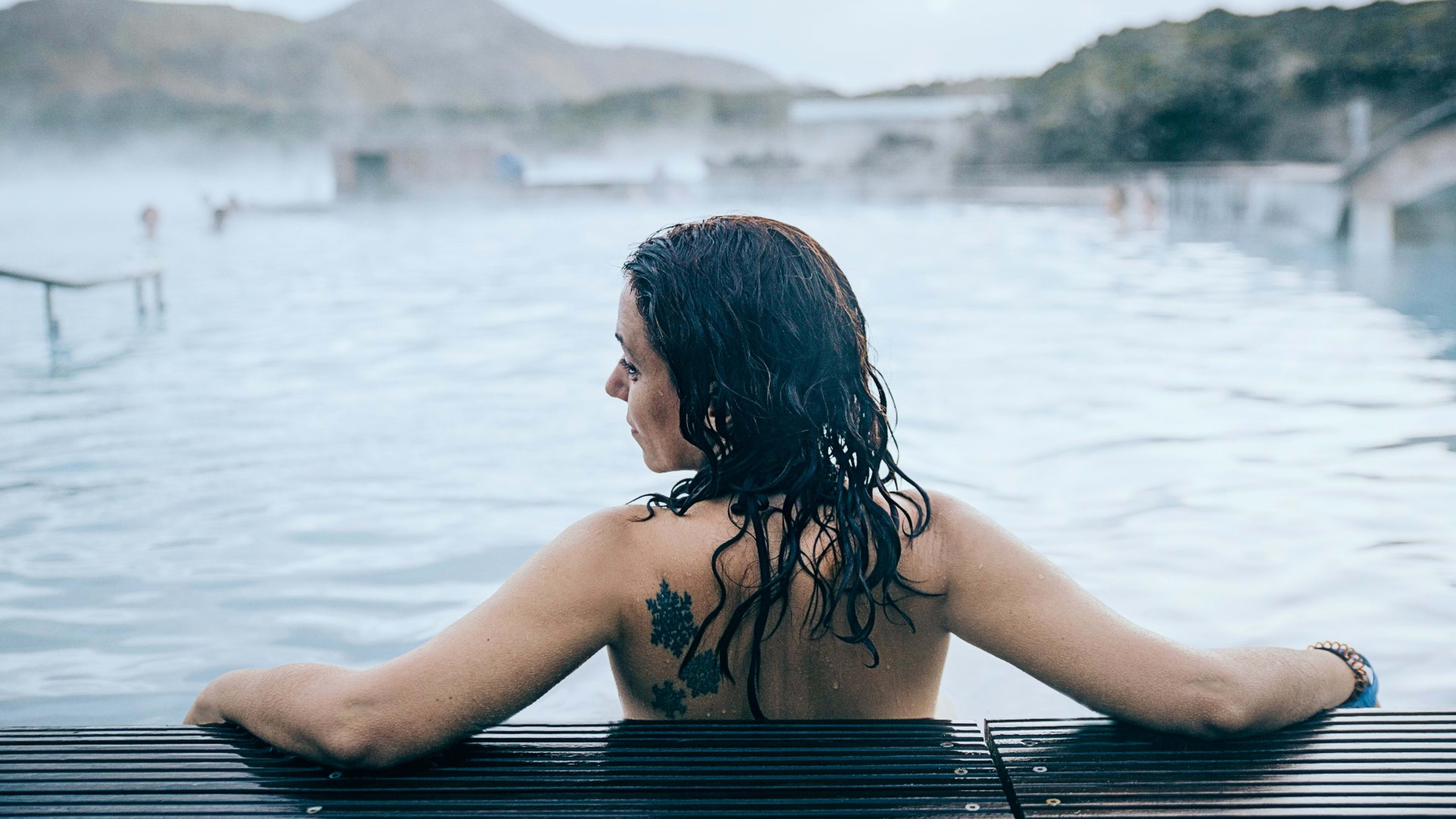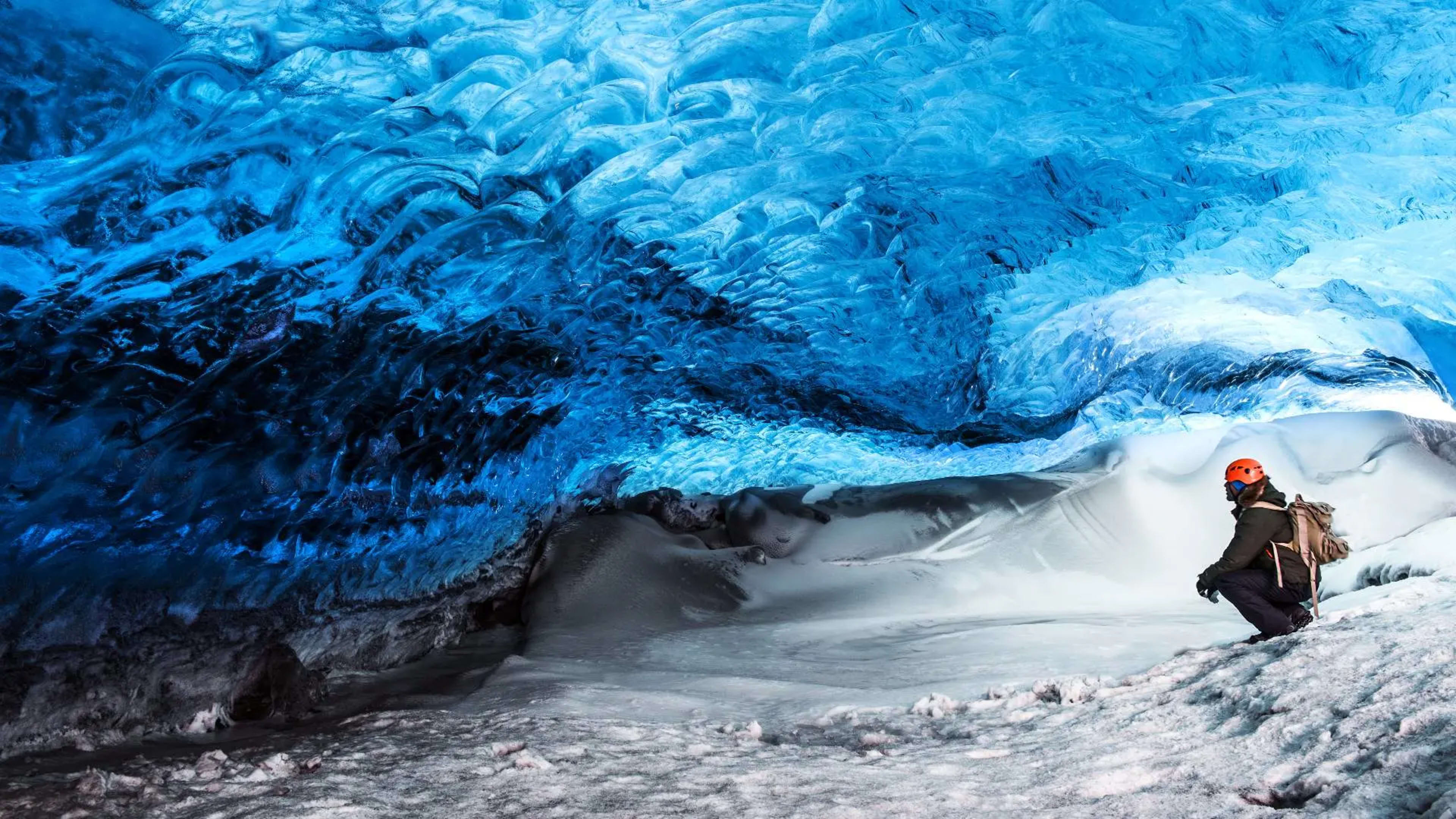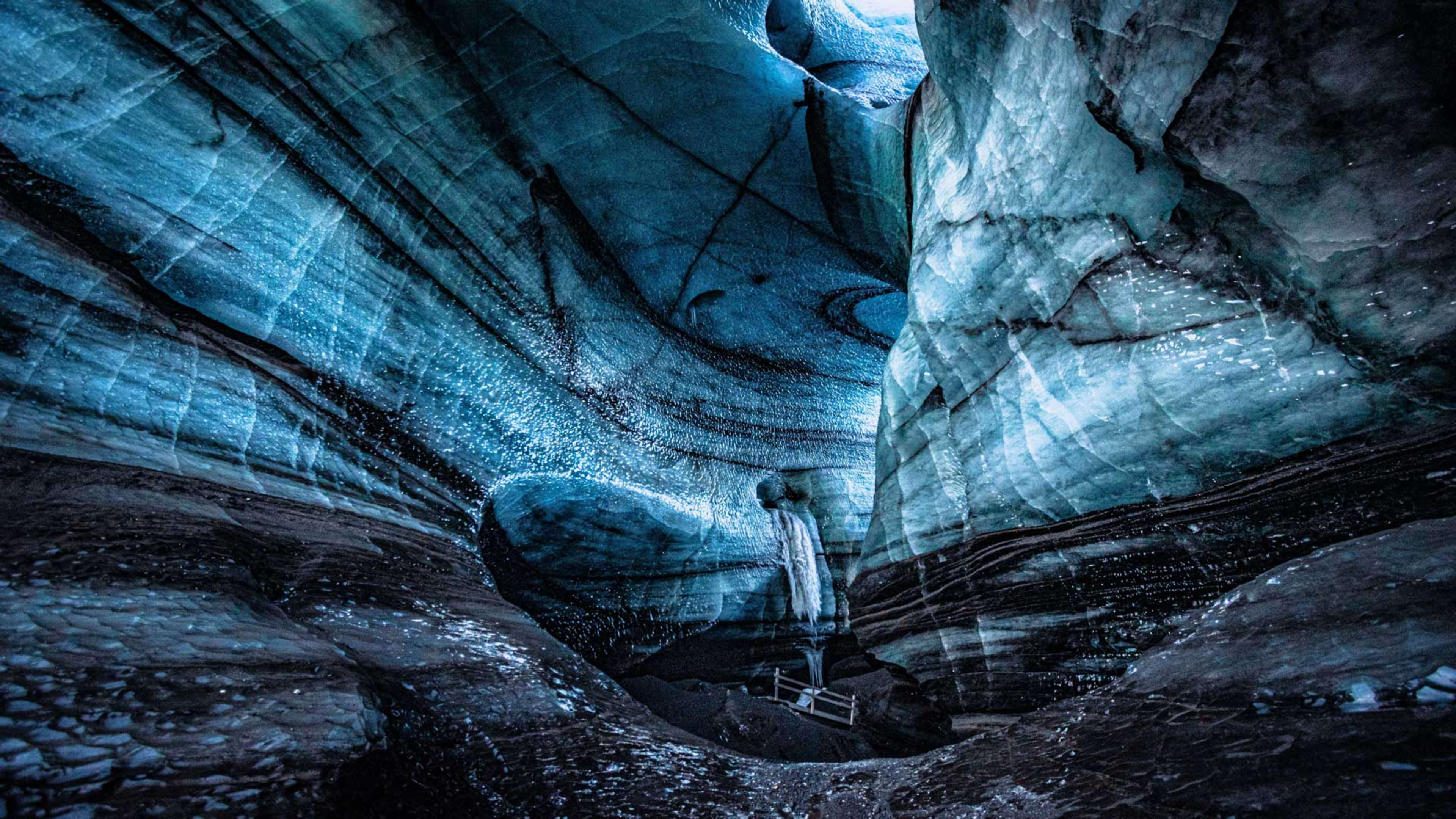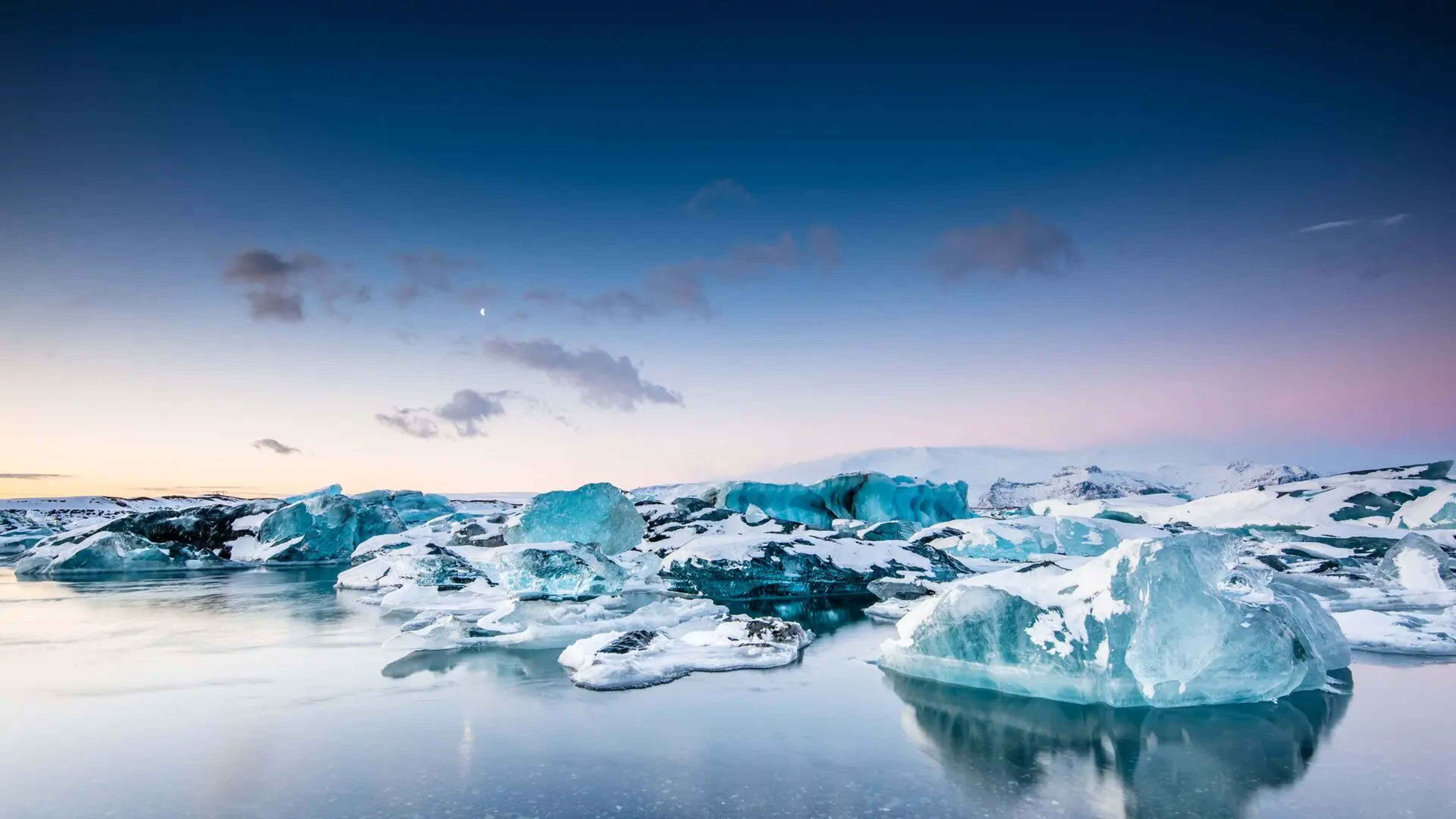As frost sets across the Land of Fire and Ice, embrace the Nordic winter by sinking into the Iceland hot springs. This is the nation’s most scenic luxury: a soothing geothermal soak surrounded by snow and steam-wreathed lava fields.
For centuries, Icelanders have indulged in thermal bathing for relaxation and warmth. This isn’t just a regional novelty; it’s a defining feature of the island’s powerful volcanic core. From the high-end spa lagoons to secluded river baths, these dreamy, steamy waters are an essential stop on any winter itinerary.
As the temperatures drop, these winter self-drive tours offer the perfect way to enjoy Iceland’s beauty, steaming pools, snowy peaks, and unique atmosphere.
How Iceland's Hot Springs Get Their Heat
Hot springs form through a simple process. Rain and snow trickle deep into the Earth’s crust, where they encounter the intense heat of magma below. This geothermically heated groundwater eventually bubbles up to the surface, pooling into iconic, mineral-rich thermal springs.
The abundance of Iceland hot springs comes as no surprise. It rests over a mantle plume and the Mid-Atlantic Ridge, where the North American and Eurasian tectonic plates are pulling apart. Together, these two intensify the volcanic activity on the island. The result is a landscape dotted with thermal pools, perfect for a dip.
Naturally, temperatures of these springs vary. In some places, the steamy waters are warm enough for a therapeutic soak, while others are too scalding hot for a dip. Either way, the raw, untamed geology makes Iceland the ultimate destination for thermal bathing.
Top Iceland Hot Springs to Visit in Winter
Freezing outside? A toasty soak in Iceland’s hot springs is becoming more and more enticing. Plus, these geothermal pools are even more starkly beautiful against the wintry landscape. We’ll guide you through the best ones—accessible, scenic, and ones that deliver the best value for your winter soak.

1. Blue Lagoon (Reykjanes Peninsula)
Ask any traveler about Iceland hot springs and there’s usually one that jumps instantly to mind: Blue Lagoon. Located between Reykjavík and Keflavík International Airport, the world-famous spa is a seamless blend of natural beauty and luxury features.
The glorious, milky blue waters emit an almost otherworldly glow against a rugged black lava field. Rich in silica and minerals, these waters run from a nearby geothermal plant. In winter, the contrast between the snow and the steam swirling over the turquoise pool adds to the atmospheric magic.
Although there are other geothermal pools in and near Reykjavík, Blue Lagoon is a standout for a reason. The views are sublime, the spa experience premium. Expect the best of the best: a swim-up bar, restaurant, sauna, steam room, and even a chic on-site hotel.
As the most famous geothermal spa in Iceland, Blue Lagoon is often crowded. Booking early is a must, ideally months in advance, if possible.
Pro Tip: Book our multi-day Reykjavík winter vacation for an expedition at the Blue Lagoon chasing Northern Lights.
2. Mývatn Nature Baths
Loved the Blue Lagoon? Meet its quieter northern twin, Mývatn Nature Baths in the Lake Mývatn geothermal area. Like the more popular spa, Mývatn is a dreamy setting. Set your sights on the electric blue waters and rocky lava fields, while hot steam gives the pool a hazy filter.
For the most serene experience, visit during winter. The darker months of the year draw less crowds, making a heated dip even more relaxing than usual. Moreover, Mývatn is famed for its Northern Lights views. The experience of floating in therapeutic waters as the aurora borealis dance across the skies? Priceless.
Pro Tip: Experience Mývatn Nature Baths’ tranquil power on our multi-day winter adventure in North Iceland.
3. Secret Lagoon
Secret Lagoon is no longer a secret, but this historic hot spring promises an authentic, tranquil bath experience. Known as Iceland’s oldest swimming pool, it’s been around since 1891. Locals call it Gamla Laugin (“old pool”), and it’s even recognized as the site of the island’s first swimming lessons!
Travelers exploring the Golden Circle can easily add Secret Lagoon to their itinerary. It’s tucked away in the Hverahólmi geothermal area; accessible yet remote enough to spot the Northern Lights in winter.
The natural oasis is small but picturesque. A small geyser near the pool erupts every few minutes, offering a uniquely dramatic (and entertaining) backdrop to your soak. It’s not as luxurious as some Icelandic spas but expect creature comforts at Secret Lagoon: changing rooms, showers, toilets, lockers, and a snack bar. Much like other popular Iceland hot springs, pre-booking is highly recommended.
Pro Tip: Secret Lagoon is a popular addition to Golden Circle tours, like our Northern Lights winter self-drive trip. Don’t worry; adding extra activities is simple and easy on Iceland Tours.
4. Hvammsvík Hot Springs
Eight pools dot a serene bay framed by ice-capped mountains in Hvalfjörður (Whale Fjord). Hvammsvík Hot Springs rests right where the Atlantic Ocean meets geothermal springs, a unique juxtaposition of cold and hot waters.
Each pool sits at a different temperature up to 40°C (104°F). The ones closest to the sea are more unpredictable, with temperatures that rise and fall with the ever-changing tides. The most daring travelers jump in the chilly ocean waters for a cold plunge in between hot soaks. (In winter, we understand the hesitation.)
Even though Hvammsvík is one of the most unique geothermal spots in the country, it rarely gets crowded. Wintertime promises even fewer tourists, plus opportunities to see the Northern Lights and the occasional seal. Keep in mind, though, that this Iceland hot spring requires pre-booking.
Pro Tip: Short on time in Iceland? For ease and convenience, book a Hvammsvík day tour with transfers from Reykjavik.
5. Reykjadalur Steam Valley
Travel off the beaten path for one of the wildest, most authentic Iceland hot springs open to the public. Reykjadalur, which translates to “steam valley,” is a lush geothermal area with a naturally heated river that’s safe for swimming.
Prepare for a scenic uphill 1.9-kilometer (3-mile) hike from the parking lot to the swim-friendly river. Tread with care. It’s best to stick to the well-marked trail to avoid accidentally stumbling into bubbling mud pools and scorching steam vents. By the river, there’s a wide boardwalk for easy access to the soothing thermal waters. The waters get hotter further upstream, so it can take a few tries to find the perfect soaking temperature.
Backpackers will love that bathing in the Reykjadalur area is free, and it’s open all year round. During winter, the hike can be extremely challenging due to heavy snow and ice. For adventurous travelers with proper gear and hiking experience, the reward is worth the effort: stunningly snowy panoramas followed by a heated, natural soak.
Related: 17 Best Day Hikes in Iceland
Iceland Hot Springs in Winter: The Perfect Season for a Soak
When the air is crisp and snow is falling gently, sinking into geothermal waters is a profound, invigorating, and deeply Icelandic experience. This is a deep-seated local tradition; Icelanders have known the magic of sub-zero bathing for centuries. There’s no greater contrast—and no greater feeling of comfort—than being enveloped by heat while surrounded by a frozen, stark-white landscape.
The Northern Lights
A remarkable perk of winter bathing is the chance to witness the aurora borealis while soaking. Few moments are more spectacular than lounging in a remote pool and watching the Northern Lights swirl across the inky sky.
Searching for lights? Kickstart your aurora hunt with our Northern Lights tours.
Travel Tips for Winter Hot Spring Visits
For a comfortable and respectful experience visiting Iceland hot springs, keep these essential local practices and practical tips in mind:
- Book in Advance: Popular spots like the Blue Lagoon and Sky Lagoon require booking weeks or even months ahead, even during winter. Secure your time slot as soon as your travel dates are final.
- Follow the Shower Etiquette: The most important rule is the mandatory naked shower before entering any public pool or lagoon. This is a hygiene requirement. Just disrobe, wash thoroughly with soap, and put on your swimsuit for the pool.
- Protect Your Hair: High-silica water can dry out hair. Coat your hair with conditioner liberally and leave it in while you soak.
- Pack Essentials for Comfort: Bring a warm, water-resistant hat to keep your head from freezing in the steam. Flip-flops or water shoes are also recommended to prevent feet from getting cold and to navigate slippery, icy pool edges.
- Hydrate and Monitor Your Time: Soaking in hot water while surrounded by cold air can be deceptively dehydrating. Drink plenty of water and monitor your soak time. If you feel dizzy or lightheaded, take a break in a cooler area.
- Mandatory Safety Check: Before every journey (driving or hiking), check road.is for real-time closures, ice, and wind hazards, and vedur.is for severe weather warnings. Never ignore closures, they’re non-negotiable for winter safety.
Relax and Rejuvenate in Iceland Hot Springs
Submerging into Iceland's naturally heated geothermal waters while the winter air chills your face is the quintessential Arctic luxury. After a day exploring the island’s rugged attractions, these mineral-rich pools offer utmost relaxation.
For the ultimate freedom to chase the aurora borealis and discover remote, steamy retreats, we highly recommend our winter self-drive tours. Book your experience today to find your geothermal oasis.
FAQ: Iceland Hot Springs in Winter
Are Iceland hot springs open in winter?
Yes, the hot springs and geothermal pools are open year-round, including winter. Soaking in the warm water is a quintessential winter activity.
What are the temperatures of Iceland hot springs in winter?
The temperatures vary, but most soaking pools are maintained between 38°C and 40°C (100°F and 104°F).
Are there any natural hot springs in Iceland?
Yes, Iceland is filled with natural geothermal springs, such as the river at Reykjadalur and the historic Secret Lagoon. Some spots are too hot to bathe in, but many are perfect for soaking.
How much do hot springs cost in Iceland?
It varies. High-end spas like the Blue Lagoon cost a premium while basic, remote natural springs like Reykjadalur are often free.
Do I need water shoes for hot springs in Iceland?
It’s highly recommended to bring flip-flops or water shoes. They help keep your feet warm and provide grip on potentially icy or slippery pool edges and natural terrain.



